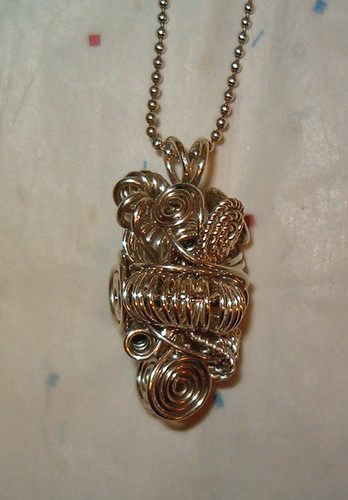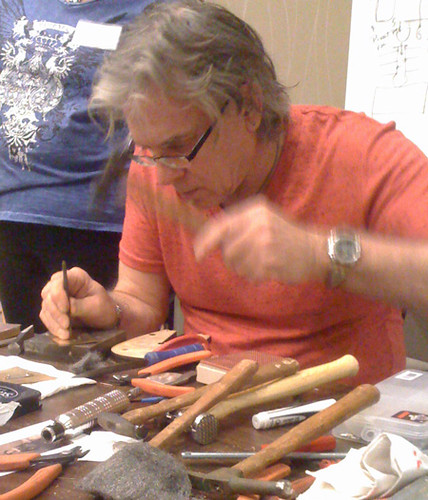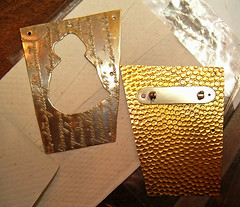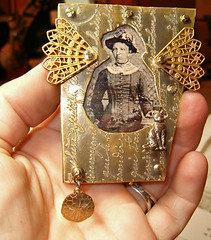One of the lessons I learned at Adorn Me! this year was that it's probably not a good idea to take an evening class on a day when I have a day class. The first day with the sawing class wasn't so bad. I think I was wired with excitement and that it carried me through the very long day.
Wednesday and Thursday I was very tired during my evening classes. I could tell my brain wasn't working as well as it should be. I still had a great time though.
 fun funky ring
Wednesday evening was Jane Salley's Fun Funky Rings class. I only got the one ring done. I got to use the dapping blocks and the disc cutters, which I loved. I had never used disc cutters. I did get parts of other rings done. Jane is a lot of fun and the class was kind of like having "playtime." We used several methods of cold connections: rivets, mini nuts and bolts, etc.
fun funky ring
Wednesday evening was Jane Salley's Fun Funky Rings class. I only got the one ring done. I got to use the dapping blocks and the disc cutters, which I loved. I had never used disc cutters. I did get parts of other rings done. Jane is a lot of fun and the class was kind of like having "playtime." We used several methods of cold connections: rivets, mini nuts and bolts, etc.
 knot bead pendant
Thursday evening was Melanie Schow's Knot Bead Pendant class. This was a great class and I enjoyed it very much. Melanie made the complex bead seem easy and she had a great handout with photos. Check out her amazing coiled jewelry here.
I was going to antique this bead when I got home, but now I've decided to leave this one as is and make a second to antique, and a third out of copper...
knot bead pendant
Thursday evening was Melanie Schow's Knot Bead Pendant class. This was a great class and I enjoyed it very much. Melanie made the complex bead seem easy and she had a great handout with photos. Check out her amazing coiled jewelry here.
I was going to antique this bead when I got home, but now I've decided to leave this one as is and make a second to antique, and a third out of copper...
Jewelry Inspirations differs from Haab’s other books because it focuses not just on techniques and projects, but on the inspiration for those projects. The book is very well illustrated with color photographs. A wide variety of materials, techniques, and mediums are used to make the projects.
I’ve been looking for ways to incorporate a mixed-media approach to my jewelry line and this book is a perfect starting place.
The first section, In the Studio, starts with development of creativity and inspiration, and ends with basic jewelry techniques needed for the projects. Haab urges artists not to let fear of imperfection get in the way of creativity and to enjoy the process of creating as much as the end result. She touches on studio organization and discusses her use of “inspiration files” of magazine clippings, sketchbooks, and notebooks. Basic techniques detailed in this section include wirework, epoxy resin clay, image transfers, making silicone molds, resin, firing metal clay, patinas, and knots.
The following sections are arranged by inspirations and projects. I counted 26 projects, not counting the variations on the earring projects. I was especially interested in the Seasons section which included a very interesting button and resin project. Another favorite is The Blast from the Past section which includes several projects involving fiber, including two that use spool knitting and Viking knit with wire. These two projects are probably the most advanced projects.
Other techniques used in projects include etching, molding by hand and making and using molds, precious metal clay, and polymer clay.
The book concludes with a listing of contributors, resources, and the index.
The wide variety of materials and techniques make this a good book not only for the beginning jewelry artist who wants to try different things, but also for experienced artists who want to add new techniques to their repertoires. The book reminds me of the reason I started making jewelry--it’s fun.
PS: The rings on the cover aren’t lampwork; they’re epoxy resin clay. Cool, huh?









